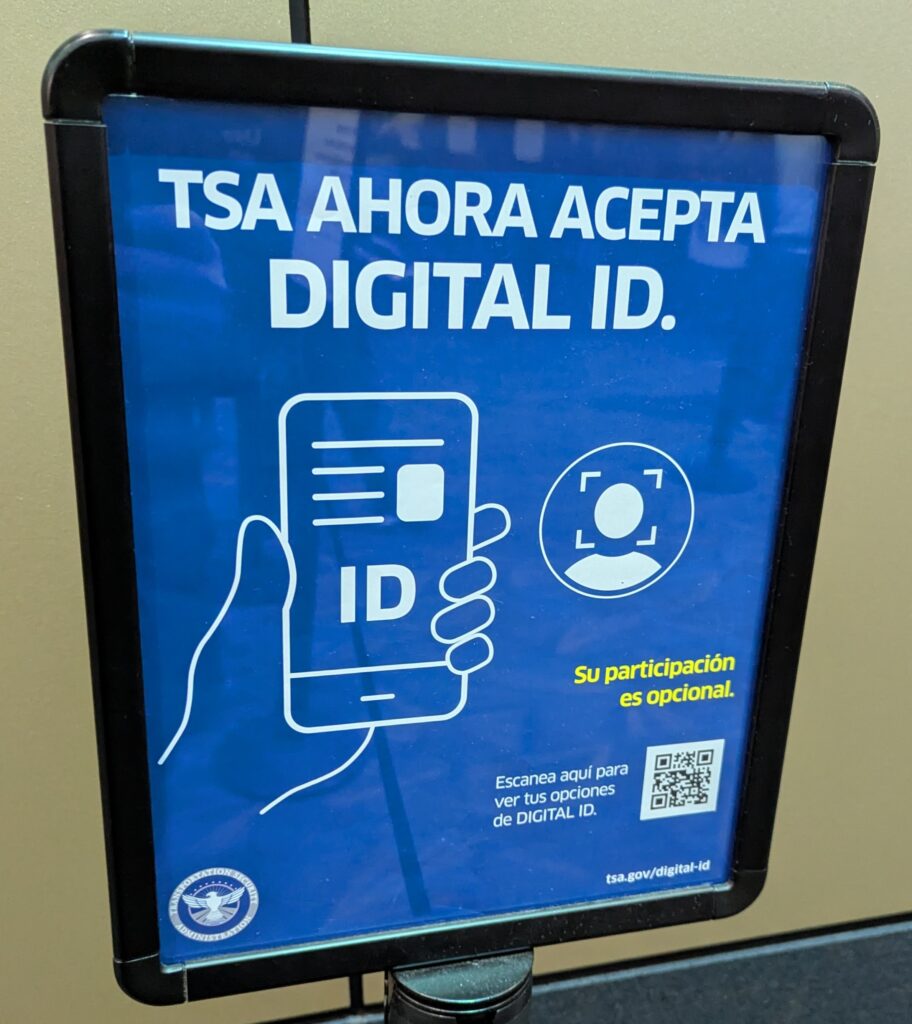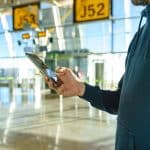Airport biometric screening expands across US amid calls for federal oversight

Biometrics is steaming ahead for air travel, but privacy concerns remain while consumers are still becoming aware of modern changes.
In the U.S. state of Virginia, lawmakers and privacy advocates are highlighting the storage and use of citizens’ images and if this should prompt greater federal interest over the technology and its impact on consumers.
Cliff Hayes, a member of the Virginia House of Delegates and chair of the Communications, Technology and Innovation Committee, spent time investigating airports’ face biometric screening. The technology helps to reduce airport check-in times, improving security and the travel experience.
“Travelers deserve both speed and security when it comes to travel, but it’s not at the expense of their privacy,” Hayes told Virginia Mercury.
The Transport Security Administration (TSA) has said that the images captured by the Credential Authentication Technology (CAT-2) are “never stored” or “used for any other purpose than immediate identification.”
CAT-2, the contactless facial biometrics self-service checkpoint system from Idemia, was introduced in August 2020 at Ronald Reagan Washington Airport. The Covid-19 pandemic was a favorable time to trial the technology since it reduces contact time between TSA officers and travelers. Travelers show their photo ID to the machine which also captures a real-time photo. Verification is based on biometric face matching and a secure Internet connection as the units check if an individual is ticketed for air travel, removing the need to show a boarding pass.
The TSA says it uses the cameras according to NIST standards while passengers who prefer to opt out of the face matching process can use alternative identity verification processes. Updates to CAT-2 screens are being carried out to notify travelers that they can decline having their photo taken.
Hayes himself visited multiple airports in Virginia, such as Dulles and Norfolk International, choosing not to use CAT-2 and found TSA officers could identify him manually from his ID card and boarding pass. Hayes believes the procedures and policy around photo captures should be protected so that imagery won’t be stored or used beyond screenings.
“It needs to be codified, I believe, and absent the lack of any federal law, I think the states need to begin to address that, just as we did with the Consumer Data Protection Act,” Hayes said. The Act gives citizens certain rights to prevent personal data collection by businesses.
Face biometric screening is expanding across the U.S. In Texas, Dallas Fort Worth Airport has debuted biometric face screening to automate identity verification for international passengers. DFW Airport has invested over $32 million to aid international arrivals, airport CEO Chris McLaughlin said, with “Enhanced Passenger Processing” reducing the average wait time for non-U.S. travelers from 50 minutes to less than 35 minutes.
In New York, travelers can also expect Enhanced Passenger Processing at JFK’s Terminal 8. American Airlines and U.S. Customs and Border Protection have implemented face biometrics to speed up reentry for U.S. citizens at Terminal 8 in JFK airport.
In Atlanta, the Hartsfield-Jackson Atlanta International Airport (ATL) is expanding face biometric screening for boarding international flights to all flights departing the U.S. The screening method is currently limited to Delta Air Lines with the expansion beginning from July, with full rollout expected to be completed by November.
Delta has used biometrics for international boarding, in conjunction with U.S. Customs and Border Protection (CBP), for years at ATL and it will now be expanded to all airlines operating at ATL’s 40 international gates. ATL consistently ranks among the busiest airports in the world. Through the first four months of 2025, passengers boarding international flights at ATL was 2.3 million, up 5.5 percent year-over-year.
Biometrics and digital ID are being held up as the future of aviation. Director General of IATA, Willie Walsh, spoke on the importance of digital ID onstage at the 81st Annual General Meeting in Delhi this month. Walsh called for the global adoption of digital ID, urging the ICAO and governments to fast-track cross-border data exchange and digital travel document standards.
IATA is promoting the One ID initiative, which uses biometric identification to create a paperless flight experience, while the Civil Aviation Organization (ICAO) has developed the Digital Travel Credential (DTC) to store and verify information from passports.
“With digital ID, passengers could walk through airport processes without ever pulling out a document,” Walsh said. The technology exists but Walsh sees the extension of aviation and its convenience in a global vision. “Flying turned from a luxury for the privileged into a global mass transit network,” the director general said, closing out his presentation.
“Billions more deserve the prosperity that aviation brings. But we must digitize, decarbonize and de-bureaucratize. That’s our flight path forward,” he said.
Are passengers aware of the digital transformation in air travel?
The IATA boss, airport executives, and biometrics companies are pushing this future of air travel but do the end users, the regular consumer, know what’s occurring? That was the aim of a survey by AirAdvisor. The flight compensation company surveyed over 3,000 respondents in the U.S., UK and France to discover what travelers really think about the future of travel.
AirAdvisor found that 53 percent of Americans were unaware of the fact that boarding passes and the usual check-in systems would be replaced by digital versions, even as biometric systems are expanding across airports in the U.S. In fact, 25 percent of Americans were unaware that the Real ID would be going into effect in May 2025.
In the UK, when asked about airports replacing paper boarding passes with digital IDs, 49 percent of respondents said they were aware of this possible change. Also, older adults, aged 59 and up, were less aware (42 percent) than younger adults (59 percent) between the ages of 18-42.
Awareness was lowest in France where only 33 percent of respondents to the survey knew about the coming changes. Just 29 percent of older adults aged 69-plus were aware compared to 37 percent of adults aged 27-42.
Privacy and reliability are the top concerns, with 61 percent of respondents worrying about how their biometric data might be stored or used, and 63 percent fear system glitches or failures. These concerns extend to digital passports as well, with 43 percent of travelers saying they’d consider uploading their passport if the system is secure and government-approved, while 28 percent rejecting the idea altogether. Meanwhile, 91 percent of Americans say they still want access to a printed boarding pass, either always or as a backup.
However, across the board younger respondents in the U.S., UK and France were more enthusiastic and accepting of a digital future when it comes to air travel.
“Travelers are not rejecting innovation, they’re asking for balance,” commented AirAdvisor CEO and founder Anton Radchenko. “They want the speed and convenience that facial recognition and digital IDs can offer, but only if it comes with clear privacy protections, reliable performance, and the freedom to opt out.”
“What we’re seeing across the U.S., UK, and France is a shared demand for transparency, accountability, and personal agency. If digital systems are rolled out without those safeguards, we risk deepening public resistance instead of building confidence in the future of travel.”
Article Topics
airports | biometrics | CBP | Credential Authentication Technology (CAT) | digital identity | face biometrics | identity verification | passenger processing | TSA | United States








Comments